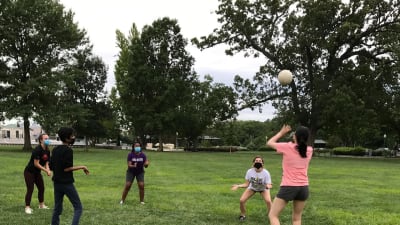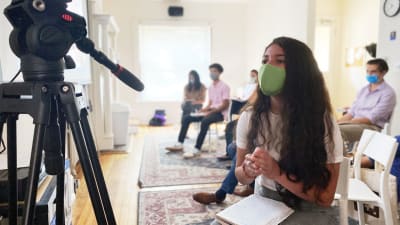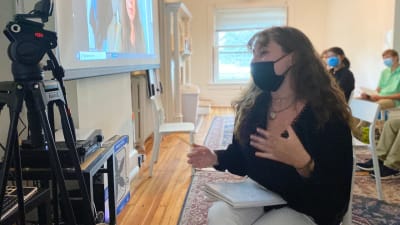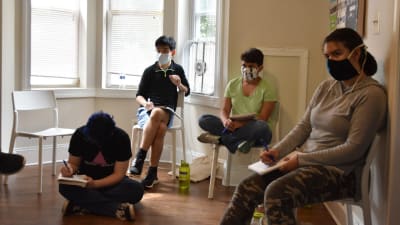See, think, act, reflect: critical thinking week
How do we know something is true? How do we know something is right? Answering these questions, especially in 2020, requires a special kind of perseverance. Leaders and activists routinely flout old norms, objectivity blurs on traditional and social media, and society seems to value feelings over reason. What’s a responsible young leader to do?
At SEGL, we tell students to follow the STAR.
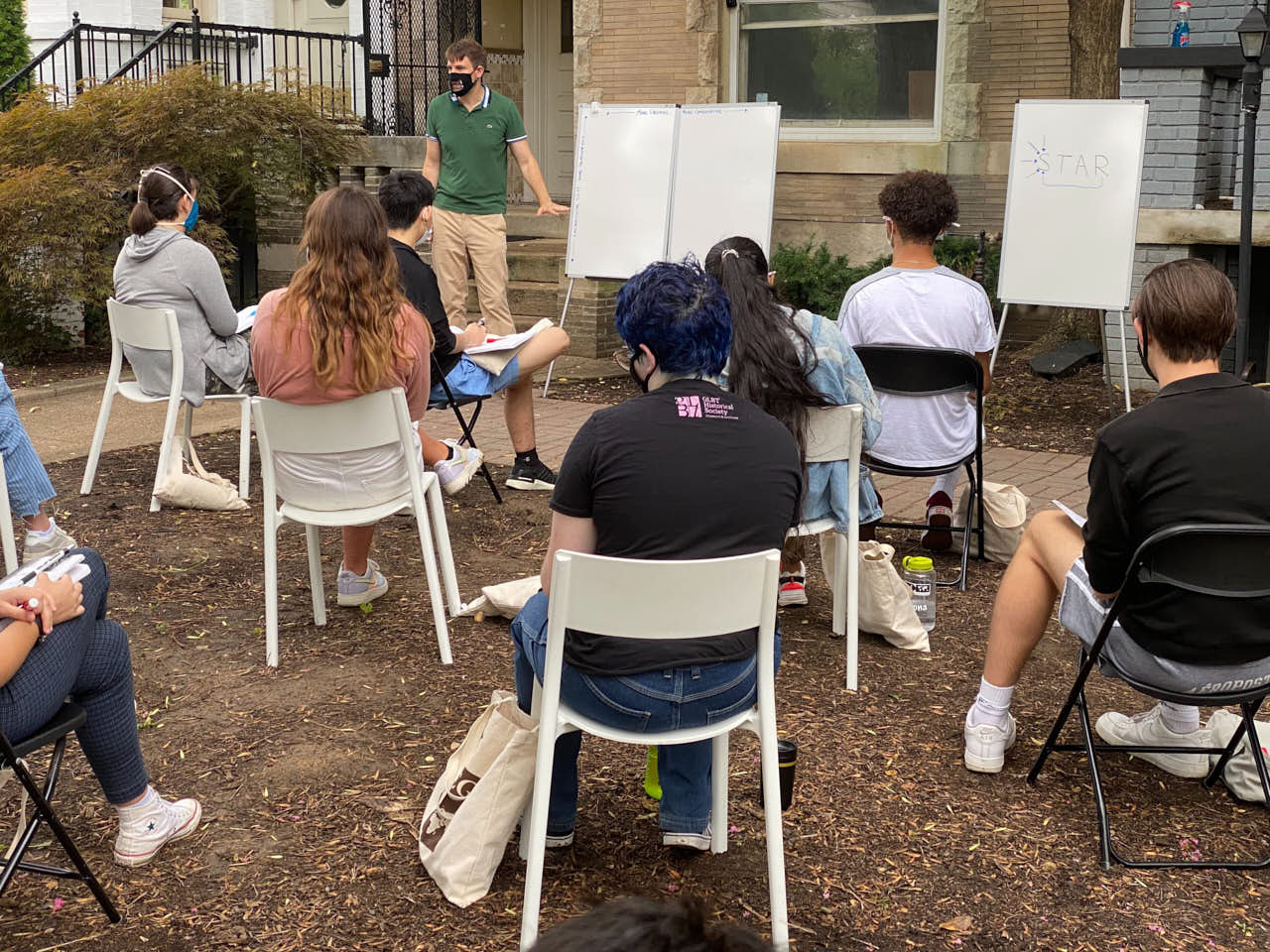
STAR is SEGL’s critical thinking framework: SEE – THINK – ACT – REFLECT. This four-step process helps students evaluate information and choices in our “fake news,” “snap judgments” era.
We’ll let the students explain each step in detail, but we spent most of our first week together learning how to see: Through which filters do we see the world, and how do those filters affect how we gather information? How do we gather information as objectively as possible, without jumping to conclusions? How do we see, clearly, before we think?
After our first Morning Meeting of the semester, we convened our opening critical thinking session in Lincoln Park (a few blocks from our residence). Once there, students gathered around a sculpture in the park’s center that has earned national attention: the Emancipation Memorial, which depicts the moment President Lincoln formally emancipated American slaves. Black fences and concrete barricades now surround the statue, which some protesters and politicians have vowed to tear down.
Should it stay? Be destroyed? Move to another location? Include an explanatory plaque? The session was a fascinating hands-on critical thinking experience, full of twists and turns as students dug beyond their first impressions. (To read Frederick Douglass’s dedication of the monument–itself a model of critical thinking–click here.) You can read a more in-depth post (written several semesters ago) about our lesson plan here.
That afternoon, students broke into rotating discussion groups and cycled through different “SEE” activities designed to bolster their critical thinking toolkit. What stories, experiences, and biases are you carrying that might influence how you see something? What images, interviews, and storylines has this news source curated for you, and what more would you like to see? How can sharing your working viewpoint with a trusted colleague help you see even more?
On Tuesday, we deepened our exploration of the Monument (our “SEE”) by looking at different arguments for and against its replacement. We also met with Marcia Cole, a local activist, artist, writer, and historical reenactor. As a reenactor with a group called FREED (Female RE-Enactors of Distinction), Cole plays Charlotte Scott, the formerly-enslaved woman who launched the fundraising campaign to build the Memorial. She has appeared at many of the protests, arguing against those who want to tear down the statue. The students pushed her with penetrating questions, scribbled down her responses, and reflected afterward on the conversation’s impact.
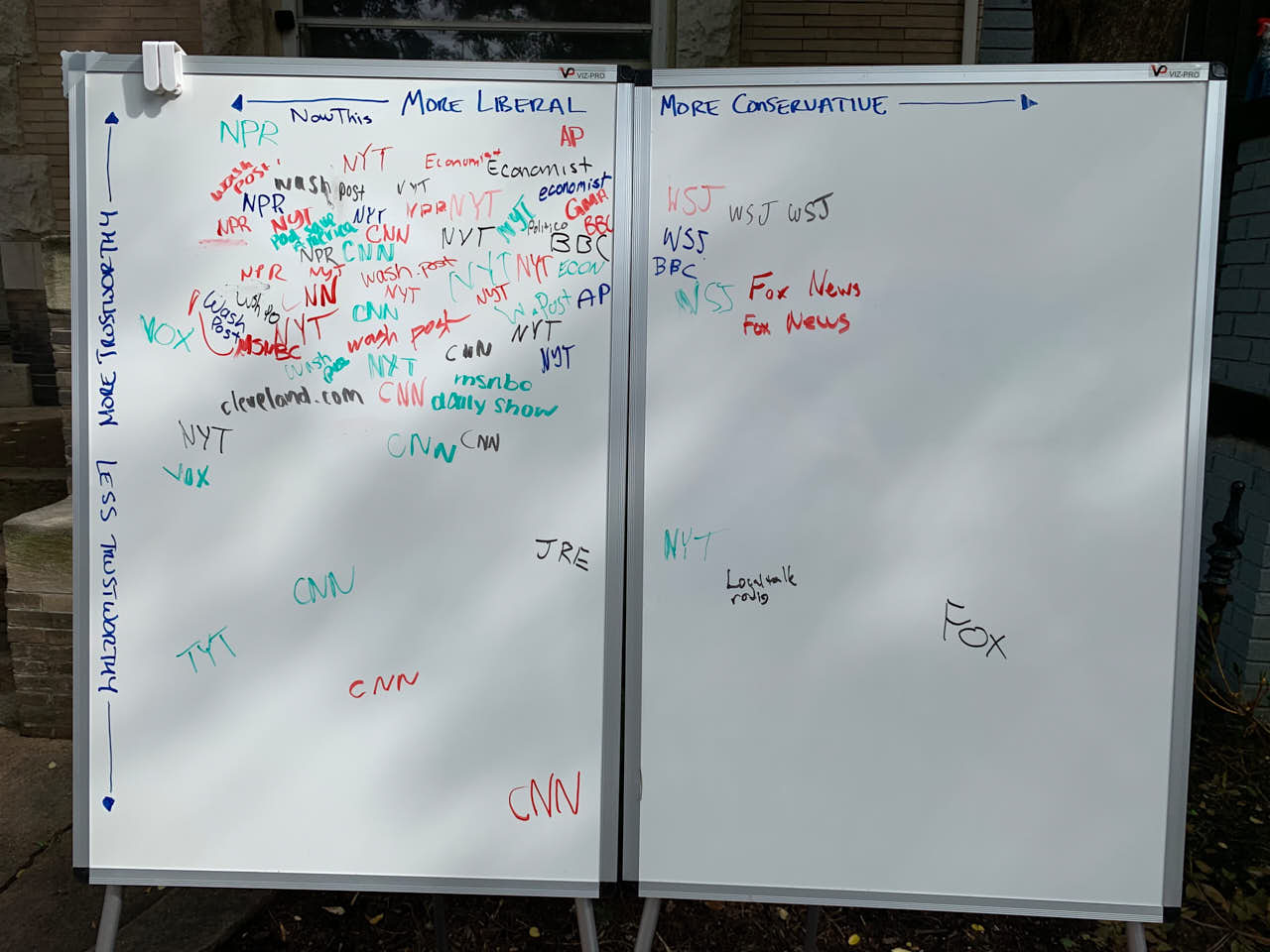
On Wednesday, we shifted our focus to the media. How might a better understanding of how journalists work inform our “THINK” about the Memorial?
Our introduction helped students understand the challenge of modern news production and consumption: after asking each student to write down the news sources she or he used most, we asked all students to arrange those sources on a matrix. On the “x axis” of that matrix was the liberal-conservative spectrum; on the y-axis how reliable each source was. The results were fascinating and showed both assumptions and blind spots in our group’s favorite news sources. The most popular quadrant was “liberal and reliable”–but can news be both politically biased and trustworthy? The session also helped create many questions for the guest experts that followed.
We told the students that on Thursday they would face their biggest SEGL challenge yet: the next day they act as journalists in a day-long, hands-on simulation. Their success would depend on how well they put their newfound critical thinking skills to work.
To provide further help, we turned to two young journalists with impressive careers. Nora Caplan-Bricker is a freelance journalist whose work has appeared in The New York Times, The New Yorker, Vanity Fair, The Washington Post, and many others. (You can read a recent New Yorker piece here.). Thomas Stackpole is a Senior Editor at the Harvard Business Review; he previously worked at The New Republic, Smithsonian, Mother Jones, and Foreign Policy. (You can read a piece he wrote several years ago for Smithsonian magazine here.) Both journalists gave mini-clinics on key journalism skills and then answered questions.
On Thursday it was showtime: the day-long journalism simulation. In groups of four, the students traversed the U.S. Capitol grounds, imagining they were visiting a Central Asian autocracy with a breakaway rebel province. Our faculty played various key leaders in what turned out to be a dramatic series of events. The catch? Through shrewd observation, questioning, and research, our students had to figure out which (if any) of the leaders to believe. The day culminated in three-minute on-the-scene video presentations in which each group decided what to share, and how.
On Friday, we welcomed two journalists with four Pulitzer Prizes between them. First we met with three-time Pulitzer Prize-winning journalist Eric Schmitt. Among other distinctions, Schmitt was the New York Times‘ main contact for WikiLeaks founder Julian Assange, and once climbed into Saddam Hussein’s final hiding place (without permission!). Schmitt has ample experience wrestling with the ethical issues our case study raised. The students heard stories, his take on President Trump and the current media landscape, and his advice for news readers in the “fake news” era.
After an afternoon all-school COVID-19 testing expedition (our nurse practitioner’s office is next door to the U.S. Postal Service Headquarters, which has been in the news recently), we met with Rebecca Ballhaus, who covers the White House for the Wall Street Journal. Ballhaus shared a Pulitzer Prize in 2019 for her coverage of President Trump’s payments from attorney Michael Cohen to adult film star Stormy Daniels. The similarities and differences between Ballhaus (who is younger, female, and writes for a paper some consider to lean right) and Schmitt (who is older, male, and writes for a paper some consider to lean left) were fascinating for students to see.
All in all, it has been a busy and promising start to the term!
Next up: a case study we developed during this summer’s national conversation on race. More on that soon!














